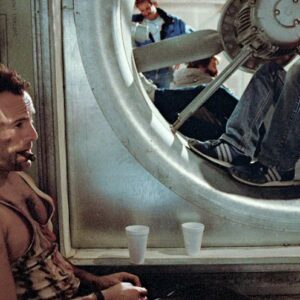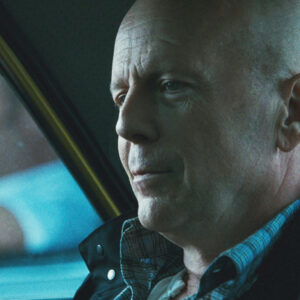Daniel Radcliffe, a name synonymous with the beloved Harry Potter series, has grown to become one of the most recognizable actors of his generation. Since being thrust into the limelight as a young boy, Radcliffe’s career has been marked by a series of remarkable performances, both on screen and stage. However, beyond his undeniable talent and the fame that accompanies it, lies a story of perseverance, resilience, and triumph over a personal challenge that many might not know about: dyspraxia.
This neurological condition, often overshadowed by Radcliffe’s achievements, has been a significant part of his life. It has shaped his experiences, influenced his approach to his craft, and played a role in the narrative of his career. In this comprehensive exploration, we delve into Radcliffe’s journey with dyspraxia, shedding light on what the condition entails, how it has affected him, and how he has managed to overcome its hurdles to reach stardom.
Understanding Dyspraxia
What is Dyspraxia?
Dyspraxia, also known as Developmental Coordination Disorder (DCD), is a motor disorder that affects the brain’s ability to plan and coordinate physical movement. This condition is not linked to intelligence but rather to the organization of movement. It often manifests in difficulties with tasks that require fine motor skills, such as writing, tying shoelaces, or playing sports. Additionally, individuals with dyspraxia may struggle with spatial awareness, memory, and social interactions.
Dyspraxia is a lifelong condition, and while it is typically diagnosed in childhood, it can persist into adulthood, affecting various aspects of daily life. The severity of the condition varies widely; some individuals may experience mild symptoms, while others may find that dyspraxia significantly impacts their ability to perform routine tasks.
Symptoms and Diagnosis
The symptoms of dyspraxia can vary but generally include:
- Poor coordination: Difficulty with both gross and fine motor skills, such as walking, running, or using utensils.
- Clumsiness: Frequent accidents or a tendency to bump into objects.
- Difficulty with tasks requiring motor skills: Trouble with activities like writing, dressing, or playing sports.
- Challenges in learning new skills: Slower to learn tasks that involve motor coordination, such as riding a bike or driving a car.
- Speech and language issues: Some individuals may have problems with articulation or fluency, which can affect communication.
- Poor memory and organization: Struggling to remember instructions or manage time effectively.
- Difficulty with social interactions: Challenges in reading social cues or understanding the subtleties of social communication.
Diagnosis typically involves a thorough assessment by a healthcare professional, including observations of motor skills, cognitive tests, and possibly a referral to a specialist such as a neurologist or occupational therapist.
The Emotional Impact of Dyspraxia
Living with dyspraxia can lead to frustration, anxiety, and low self-esteem, particularly in children who may struggle to keep up with their peers. The challenges posed by the condition often extend beyond the physical difficulties, affecting emotional well-being and social development. In many cases, the stigma and misunderstanding surrounding dyspraxia can exacerbate these issues, leading to feelings of isolation or inadequacy.
However, with proper support and interventions, individuals with dyspraxia can develop strategies to manage their symptoms and lead fulfilling lives. Early diagnosis and therapy are crucial in helping those with dyspraxia build confidence and achieve their potential.
Daniel Radcliffe: A Childhood with Dyspraxia
Early Signs and Diagnosis
Daniel Radcliffe was born on July 23, 1989, in London, England. From a young age, he displayed signs of dyspraxia, although the full extent of the condition became more apparent as he grew older. Radcliffe’s difficulties with coordination and fine motor skills were early indicators of dyspraxia. Simple tasks, such as tying his shoelaces or writing legibly, proved challenging, and his struggles with these activities often set him apart from his peers.
Radcliffe’s diagnosis of dyspraxia came when he was still a child, a time when he was also beginning to explore his interest in acting. The challenges posed by dyspraxia could have been a significant obstacle, particularly in an industry that often demands precision, physicality, and confidence. However, Radcliffe’s passion for acting, combined with the support of his family and educators, allowed him to pursue his dreams despite the condition.
The Role of Family Support
Radcliffe has often spoken about the importance of his family’s support in managing his dyspraxia. His parents, Marcia Gresham and Alan Radcliffe, were instrumental in ensuring that he received the necessary help to cope with his condition. They encouraged his interests and provided him with the resources he needed to succeed, both academically and in his burgeoning acting career.
His family’s understanding and acceptance of his dyspraxia played a crucial role in helping Radcliffe build confidence and resilience. Rather than focusing on his difficulties, they celebrated his achievements and supported his aspirations, fostering an environment where he could thrive despite the challenges he faced.
Early Acting Experiences
Radcliffe’s acting career began at a young age, with his first role in the BBC adaptation of Charles Dickens’ David Copperfield in 1999. Despite his dyspraxia, Radcliffe quickly demonstrated a natural talent for acting, capturing the attention of casting directors and audiences alike. His ability to convey emotion and depth in his performances set him apart, even as a child.
However, Radcliffe’s dyspraxia did present challenges in his early acting experiences. Learning lines, coordinating movements on set, and managing the physical demands of acting required extra effort and focus. Nonetheless, Radcliffe’s determination and passion for the craft helped him overcome these obstacles, and his early success paved the way for the role that would define his career.
The Harry Potter Phenomenon
Becoming Harry Potter
In 2000, at the age of 11, Daniel Radcliffe was cast as Harry Potter, the lead character in the film adaptation of J.K. Rowling’s Harry Potter series. This casting decision would change his life forever, catapulting him to international fame and making him a household name.
The role of Harry Potter was a demanding one, requiring Radcliffe to perform complex scenes that involved physical action, emotional depth, and the use of special effects. For someone with dyspraxia, the coordination and concentration required for such tasks could have been daunting. However, Radcliffe’s dedication to the role, coupled with the support of the film’s production team, allowed him to excel.
Challenges on Set
Throughout the filming of the Harry Potter series, Radcliffe faced various challenges related to his dyspraxia. The intricate choreography required for action scenes, the precise timing needed for special effects, and the physical demands of the role all tested his coordination and motor skills.
One of the most notable challenges was learning to perform magic spells on set. The sequences often required Radcliffe to memorize and execute specific wand movements, which could be difficult for someone with dyspraxia. However, through practice and perseverance, Radcliffe mastered these skills, delivering performances that captivated audiences around the world.
Radcliffe’s experience on the set of Harry Potter also highlighted the importance of teamwork and collaboration. The film’s directors, choreographers, and stunt coordinators worked closely with Radcliffe to ensure that he felt comfortable and confident in his role. Their understanding and support were instrumental in helping him overcome the challenges posed by dyspraxia.
Coping Strategies
To manage the demands of his role as Harry Potter, Radcliffe developed various coping strategies to navigate the challenges of dyspraxia. These strategies included:
- Repetition and Practice: Radcliffe often spent extra time rehearsing scenes, particularly those that required complex movements or coordination. Repetition helped him build muscle memory and confidence, allowing him to perform tasks more fluidly.
- Breaking Down Tasks: Radcliffe learned to break down complex tasks into smaller, more manageable steps. This approach made it easier for him to focus on one aspect of a scene at a time, reducing the overwhelm that could come from trying to manage multiple elements simultaneously.
- Mindfulness and Focus: Maintaining focus was crucial for Radcliffe, especially during long and demanding shoots. He practiced mindfulness techniques to stay present and centered, which helped him manage the stress and anxiety that could accompany the physical challenges of dyspraxia.
- Seeking Support: Radcliffe did not hesitate to seek support when needed. Whether it was asking for additional time to rehearse or seeking guidance from coaches and choreographers, he was proactive in ensuring that he had the resources and assistance necessary to succeed.
The Impact of Harry Potter on His Confidence
The success of the Harry Potter films had a profound impact on Radcliffe’s confidence and self-esteem. Despite the challenges posed by dyspraxia, he had proven to himself and the world that he could excel in a demanding and highly visible role. This experience helped him build a sense of resilience and determination that would carry him through the rest of his career.
Moreover, Radcliffe’s portrayal of Harry Potter resonated with audiences worldwide, particularly with those who also faced personal challenges. His ability to bring such an iconic character to life, despite his own struggles, made him a role model for many fans who saw themselves in his journey.
Beyond Harry Potter: Navigating Adulthood with Dyspraxia
Transitioning to Adult Roles
After the conclusion of the Harry Potter series, Radcliffe faced the challenge of transitioning from a child star to an adult actor. This period of his career required him to take on new and diverse roles that would showcase his range and versatility as an actor.
For Radcliffe, this transition was also an opportunity to explore characters and stories that resonated with his personal experiences, including those related to dyspraxia. He sought out roles that allowed him to challenge himself creatively and push the boundaries of his craft.
One of Radcliffe’s first major roles post-Harry Potter was in the 2012 film The Woman in Black, where he played a young lawyer named Arthur Kipps. This role required a different set of skills than those needed for the fantasy world of Harry Potter, including the ability to convey fear and vulnerability in a horror setting. Radcliffe’s performance was widely praised, demonstrating his ability to take on more mature and complex characters.
Embracing Diverse Roles
As Radcliffe continued to build his career, he embraced a wide range of roles that showcased his versatility and willingness to take risks. Some of these roles included:
- Allen Ginsberg in Kill Your Darlings (2013): Radcliffe portrayed the famous Beat Generation poet, a role that required him to embody the intellectual and emotional depth of the character. The film also marked Radcliffe’s foray into independent cinema, allowing him to explore more experimental and unconventional storytelling.
- Ig Perrish in Horns (2013): In this dark fantasy film, Radcliffe played a man who develops supernatural powers after being accused of his girlfriend’s murder. The role was physically and emotionally demanding, requiring Radcliffe to navigate complex special effects and intense scenes of psychological distress.
- Manny in Swiss Army Man (2016): Radcliffe took on the unconventional role of a corpse with magical abilities in this absurdist comedy-drama. The film, which explores themes of loneliness and identity, showcased Radcliffe’s willingness to push the boundaries of traditional acting and take on roles that defy expectations.
Managing Dyspraxia in Adulthood
As Radcliffe navigated his career as an adult, he continued to manage the challenges of dyspraxia. The condition did not disappear with age, and Radcliffe remained vigilant in employing the strategies that had helped him in his youth. However, he also recognized that dyspraxia was a part of who he was, and he embraced it as such.
Radcliffe has spoken candidly about how dyspraxia affects his daily life, including the ongoing difficulties with tasks that many people take for granted. For example, he still struggles with handwriting, a challenge that has persisted since childhood. However, rather than allowing these difficulties to define him, Radcliffe has learned to adapt and find alternative ways to accomplish tasks.
Advocacy and Awareness
As Radcliffe’s profile grew, so did his platform to advocate for causes that were important to him. Dyspraxia became one of those causes, and Radcliffe has used his influence to raise awareness about the condition and advocate for greater understanding and support for those who live with it.
In interviews and public appearances, Radcliffe has spoken openly about his experiences with dyspraxia, encouraging others to seek help and not be ashamed of their condition. He has also highlighted the importance of early diagnosis and intervention, noting that the right support can make a significant difference in the lives of those with dyspraxia.
Radcliffe’s advocacy has helped to destigmatize dyspraxia and bring attention to the challenges faced by those who live with it. By sharing his story, he has inspired others to embrace their differences and pursue their goals, regardless of the obstacles they may face.
The Broader Impact of Radcliffe’s Journey
Inspiring Others with Dyspraxia
Daniel Radcliffe’s journey with dyspraxia has had a profound impact on many people who live with the condition. His openness about his struggles and successes has provided hope and encouragement to those who may feel isolated or discouraged by their challenges.
For many, Radcliffe’s story is a reminder that dyspraxia does not have to limit one’s potential. His achievements in the face of adversity demonstrate that with determination, support, and self-acceptance, it is possible to succeed in any field, whether it be acting, academics, sports, or any other pursuit.
Changing Perceptions of Dyspraxia
Radcliffe’s visibility as a public figure with dyspraxia has also contributed to changing perceptions of the condition. In a world where neurological disorders are often misunderstood or overlooked, Radcliffe’s story has brought attention to the realities of living with dyspraxia and the importance of understanding and accommodating those who have it.
By sharing his experiences, Radcliffe has helped to shift the narrative around dyspraxia from one of limitation to one of possibility. His success challenges the stereotype that individuals with dyspraxia are inherently clumsy or incapable, showing instead that they can be talented, capable, and resilient.
Advocacy for Mental Health and Disability Rights
In addition to his advocacy for dyspraxia, Radcliffe has also been a vocal supporter of mental health awareness and disability rights. He has used his platform to speak out on issues related to mental health, encouraging open conversations and promoting the importance of seeking help.
Radcliffe’s advocacy extends beyond dyspraxia, as he recognizes the broader connections between neurological disorders, mental health, and the need for a more inclusive and supportive society. His work in this area reflects his commitment to using his influence for positive change and helping others navigate the challenges they face.
A Role Model for Resilience and Determination
Throughout his career, Daniel Radcliffe has demonstrated a remarkable resilience and determination in the face of challenges. His journey with dyspraxia is just one example of how he has overcome obstacles to achieve success, but it is also a central part of what makes his story so inspiring.
Radcliffe’s ability to navigate the pressures of fame, the demands of his career, and the challenges of dyspraxia with grace and determination has made him a role model for many. His story is a testament to the power of perseverance and the importance of embracing one’s unique qualities, even in the face of adversity.
Conclusion: The Legacy of Daniel Radcliffe’s Journey
Daniel Radcliffe’s journey from a young boy with dyspraxia to an internationally acclaimed actor is a story of courage, resilience, and triumph. It is a story that goes beyond his iconic role as Harry Potter, highlighting the challenges he has faced and the determination he has shown in overcoming them.
Radcliffe’s experience with dyspraxia has shaped not only his career but also his approach to life. It has taught him the value of persistence, the importance of seeking support, and the power of embracing one’s differences. His story serves as an inspiration to countless individuals who face similar challenges, showing them that they too can achieve their dreams, no matter the obstacles they may encounter.
Moreover, Radcliffe’s advocacy for dyspraxia and mental health has had a lasting impact on how these issues are perceived and addressed. His willingness to share his experiences has helped to raise awareness, reduce stigma, and promote a more inclusive and understanding society.
As Radcliffe continues to evolve in his career and personal life, his journey with dyspraxia remains a central part of his narrative. It is a journey that has not only defined him but also empowered him to make a difference in the world. Through his work, both on and off the screen, Radcliffe continues to inspire others to embrace their own unique journeys and to pursue their passions with determination and courage.





